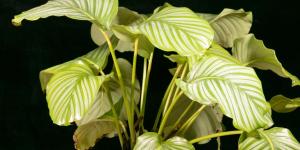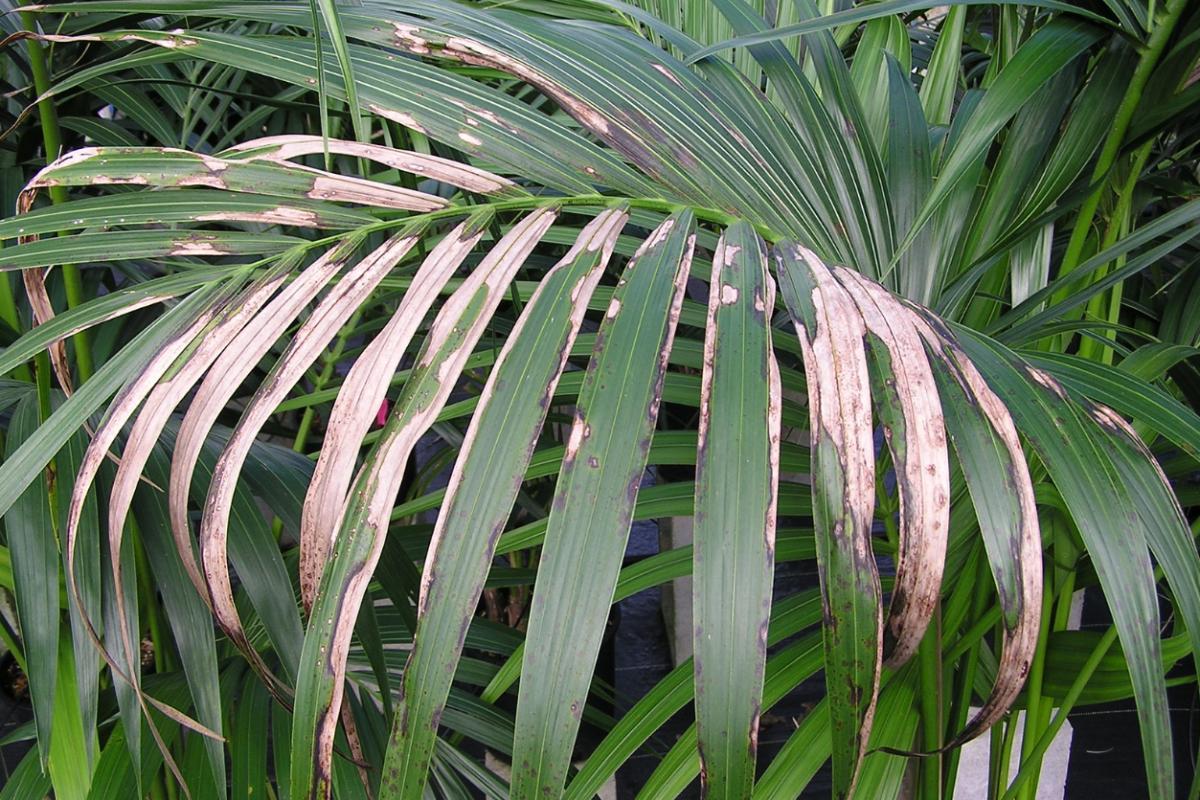My Kentia Palm Leaves Are Turning Brown


Brown leaves on kentia palm plant may be due to excess sun, lack of water, impoverished soil, very dry air, parasite infestation or friction with the plant. To treat it, you must keep it under filtered light with moderate watering. Fertilize the soil once a month in summer, spray water frequently on its leaves and place it in a spacious place.
The Kentia palm (Howea forsteriana) is the one of the most popular houseplants, despite their presence in the wild being considered vulnerable. Its care is relatively easy, but stress indicators such as brown leaves are common. When you see the tips turn brown, then we can help. If the leaves are all brown at the top, it may be too late. This is because the lower leaves usually turn brown first and by the time it gets to the top, too much damage may be done. thedailyECO explains what to do when my Kentia palm leaves are turning brown.
Excess sun
This plant is usually used indoors because it does not tolerate direct sun. Excessive light can be the reason the palm's leaves turn brown. In fact, it is the most common reason for brown leaves on Kentias.
If you have the Kentia plant outdoors, it is recommended to place it under a roof or under the canopy of taller trees that help filter the light. Likewise, non-direct light should be provided for indoor Kentia palms, ideally filtered through a window with a thin curtain.
Juvenile specimens are identifiable by their small size. They are weaker and more prone to burns. It is recommended to keep these young Kentias in semi-shade or even full shade to avoid the risk of brown and burnt leaves. Most Kentias on the market are not yet adults when sold, so you will most likely need to provide a soft light environment when you first take it home.
In case your plant is already very damaged and you cannot recover it, you can use the link below to purchase a new Kentia palm:

Lack of water
When Kentia goes through dehydration, the leaves will first turn yellow and finally brown. This is the second most common cause of brown leaves on Kentia palms.
They require constant watering, so a prolonged drought will be quite serious for them. The ideal amount of water is every four days in winter and every two days in summer. Another indicator is the humidity of the substrate. Check that the first centimeters are always moist, without becoming waterlogged as it does not tolerate excess water either.
In summer you can even place them in the shower so that they are completely moistened or submerge the container in another that has water so that it absorbs as much as it needs. The latter is known as immersion irrigation. You can do this once a week. Allow excess water to drain before placing it in another container, because it does not tolerate standing in standing water. Additionally, consider that indoor irrigation will be less because there is less evaporation due to heat than outdoors.
Take a look at our article on why a rose's leaves are turning yellow to learn more plant-specific care.
depleted soil
When the plant has taken all the nutrients that were bioavailable in the substrate, it will begin to weaken. This will start the leaves wilting and they will eventually turn brown. It is recommended to fertilize once a month during the Kentia palm's growth stage, which is in summer. In winter this fertilizer is not necessary.
Learn about the difference between compost and fertilizer with our related article.

very dry air
If you live in a dry place, it can reduce the humidity in the air. Since the natural habitat of Kentia palm plants are humid tropical regions, the leaves will lose internal moisture and begin to turn brown if the air is too dry. You can solve this with a room humidifier if possible. This is common with Kentias and other plants that absorb moisture.
If you are unable to access a humidifier, you can lightly spray the entire Kentia palm with water, especially its leaves. You could also place a plate with stones and water to provide humidity to the environment. Spraying is essential in rooms that use heating, because this removes all humidity from the air.

Red spider
The red spider mite is a type of mite considered to be a pest. It is detected with small cobwebs on the underside of the leaves which they use for protection. These mites feed on plants, leaving spots on the leaves, but when the infestation is very severe, the leaves will weaken and end up turning brown. It is common for this mite to thrive in dry conditions or in hot seasons, so if you have a dehydrated kentia it will be easy for the red spider infestation to take hold.
To eliminate red spider mites, try to increase irrigation and environmental humidity. You can do the latter by spraying water on the leaves of the plant, something that it will greatly appreciate to keep it fresh. If this doesn't help, use an organic insecticide. Wiping the cobwebs off will also help.
Learn about the most common pests and diseases which affect orchids in our related article.
Rubbing leaves
If you have your kentia in a place that is too small or tight, there may be no space to pass and the leaves get rubbed. People or objects walking past can rub the leaves and cause trauma which results in brown patches. Placing them too close to the wall or touching other plants will also mean the leaves turn brown.
You can cut off the brown and damaged leaves to start the fresh plant in its new location. Make sure you give it enough space so the blades don't suffer.
There are various problems which can harm a plant and cause damage to their leaves. They can affect plants differently. For this reason, you may want to know why my poinsettia is wilting or problems with a Christmas cactus.
If you want to read similar articles to My Kentia Palm Leaves Are Turning Brown, we recommend you visit our Plant care and cultivation category.
- Ellison, D., Ellison, A. (2001 ). Cultivated Palms of the World. Australia: UNSW Press.
- Burés Pastor, S. (2022). 50 Perfect Plants. Spain: Larousse.
- Southern, N. (2017). How Not To Kill Your Plants. United Kingdom: Hodder & Stoughton.
- Vermeulen, N. (1999). Encyclopedia of House Plants. Netherlands: Fitzroy Dearborn Publishers, Incorporated.








